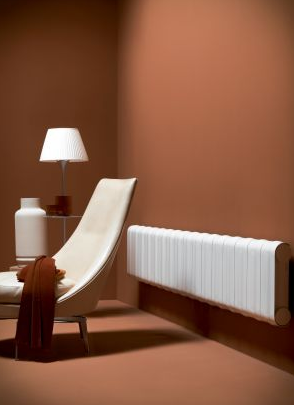
From hotel en-suites and lobbies to restaurants and retails spaces, when undergoing renovations it makes sense to upgrade the heating system to energy efficient radiators that will save money, as well as the planet. These clever designs offer excellent heat efficiency and look stunning in any room.
Nick Duggan, MD, at The Radiator Centre has seen a big increase in interest for energy-efficient designs over the past few years, in both domestic and commercial markets. Nick comments, “With energy prices at an all-time high it’s not hard to understand why both homeowners and businesses are keen to save money wherever possible. Energy efficient radiators are more efficient because they use lower volumes of water. Less water means you don’t need to use so much energy to heat it. For example, aluminium radiators have less water content and faster reaction times than their steel equivalents.”


With sustainability being at the forefront of everyone’s minds nowadays, the choice of energy-saving designs has increased significantly over the past few years, as the technology continues to develop. “For the ultimate in low water content, the Synergy range for example, contains up to 90% less water than you would find in a conventional radiator. For systems that are running at particularly low temperatures, or where the radiator size cannot be increased beyond a conventional size, some radiators (such as the Synergy) also come with fan assistance. This speeds up the drawing of cooler air across the heating elements, which in turn increases the room temperature more quickly and efficiently.”

If the interior design suits something more classic, another great energy-saving design is the Soho. An updated version of the more traditional tubular multi-column radiators, the Soho boasts a remarkable saving on water – approximately 80% less than its traditional counterparts, meaning lower energy consumption. It is made from recyclable aluminium profiles which are joined together by a patented combination and locking system. This allows for superior heat output values, despite the reduced water requirement. Optional accessories of a hook and towel rail make it great for hotel bathrooms, and freestanding versions in both horizontal and vertical designs are also available, the latter being ideal for when there’s a lack of wall space.


Recent years have also seen a number of smart radiators being introduced to the market. Nick explains, “These are great for giving the user total control over their heating system, which in turn can help with energy savings too. The ability to control the heating remotely means users can control every aspect of it, so the heating never needs to be on when it’s not needed. It is easy to turn off or down if, for example, there is an unexpected rise in temperature in the winter. It can then be scheduled to come on later than usual, the thermostat can be turned down, or it can be turned off completely.”


“You can also control the temperature of individual rooms, meaning that if there are hotel rooms that aren’t being used for example, you can turn down the thermostat. Smart technology has other advantages too with some systems able to detect when a room is empty and automatically turn the heating off. Others will help the user to analyse energy usage and most will also enable control the hot water system making it easier to regulate consumption for quieter and busier times in a hotel or restaurant”, says Nick.
“The future for sustainable radiators and towel rails is very exciting with new designs being introduced all the time. Manufacturers appreciate the need for energy saving models which mean interior designers don’t have to compromise on style and the latest designs coming through are living up to this demand. Watch this space!” comments Nick.
